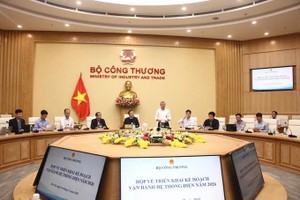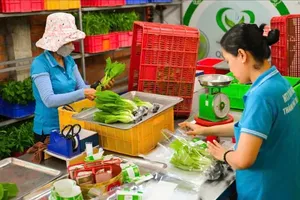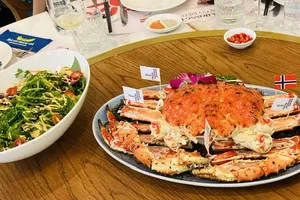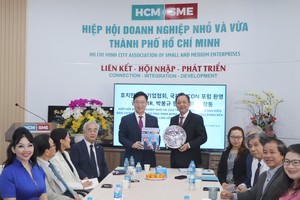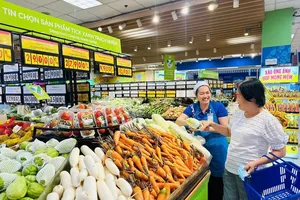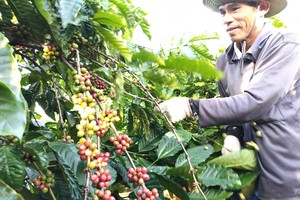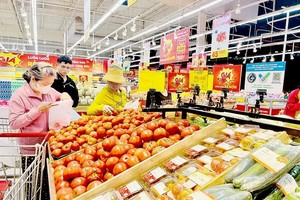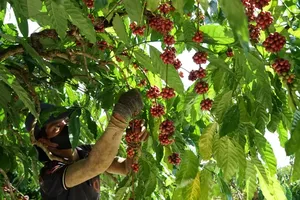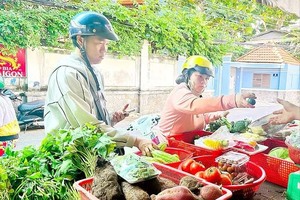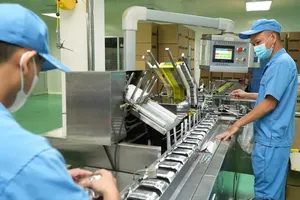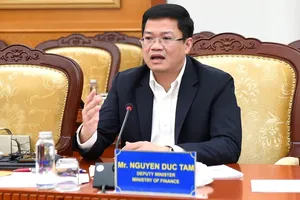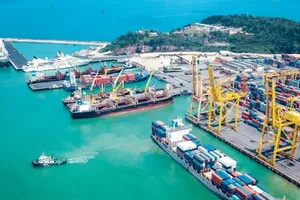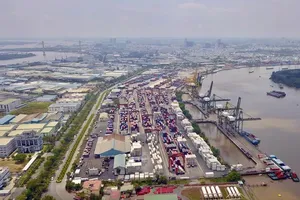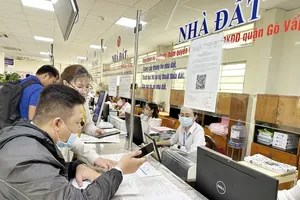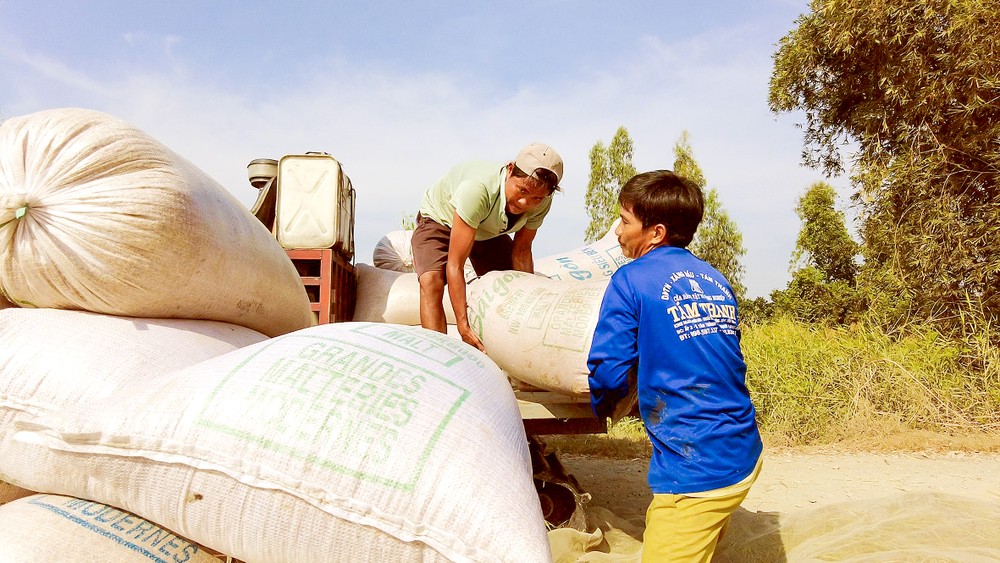
Experts warn that without identifying the root causes and implementing appropriate solutions, losses for producers and exporters could become even more severe.
Rushed sales to minimize losses
In recent days, mobile rice-selling trucks and roadside vendors have appeared along National Highway 1A, rural roads in Cai Lay and Cai Be districts (Tien Giang), National Highway No.30 (Dong Thap), and National Highway No.60 (Chau Thanh District, Ben Tre). A vendor who also operates as a rice trader explained that since early February 2025, the steep drop in export prices has forced businesses and traders to offload stock at low prices, with many accepting losses to cut their financial burdens.
Nguyen Thi Lan, a rice trader in Cai Lay District, shared that over the past month, she has sold more than 400 tons of rice from her truck. She had purchased the paddy before the Lunar New Year, expecting to sell it to exporters. However, as prices fell after the Lunar New Year, traders slowed their purchases, with some even abandoning their deposits. As a result, she had no choice but to sell at lower prices to mitigate losses. “I’m selling rice for around VND12,000-15,000 per kilogram, which is VND4,000-8,000 lower than market prices,” Lan said.
A similar situation is unfolding in Tan Nghia Commune, Cao Lanh District, Dong Thap Province, where residents are flocking to roadside trucks selling discounted rice. “Fragrant rice costs only VND750,000 per 50kg bag, nearly half the price at markets and stores, so many people, including myself, are stocking up,” said a buyer named Thanh.
With rice prices plummeting, paddy prices are following suit. According to the Vietnam Food Association, paddy prices in the Mekong Delta have fallen to around VND5,400 per kilogram for regular varieties and VND7,000-8,500 for fragrant paddy. At storage facilities, fragrant paddy is now selling for VND8,000-9,500 per kilogram, down 40-50 percent compared to last year. In Dong Thap Province, winter-spring paddy prices have plunged to about VND5,000-5,100 per kilogram for IR50404 and VND6,500-6,800 for Dai Thom 8 (long fragrant rice 8) and OM18 rice varieties.
Nguyen The Hoang, a farmer in Binh Thanh Commune, Lap Vo District, Dong Thap Province, recently harvested 1.5 hectares of OM18 rice but had to sell it to traders for just VND6,600 per kilogram—over VND2,000 lower than the same period last year. “At this price, after covering production costs and land rental, I barely break even. Many farmers are worse off, especially those who invested in additional supplies,” Hoang said.
The Vietnam Food Association (Vietfood), on February 18, reported that the average price of regular paddy at the field had dropped to VND5,400 per kilogram, while fragrant paddy ranged between VND7,000 and VND8,500. At warehouses, fragrant paddy prices had fallen to VND8,000-9,500 per kilogram—40-50 percent lower than in 2024.
The Ministry of Agriculture and Rural Development (MARD) has reduced the country’s rice cultivation area to 7 million hectares—a decrease of 132,000 hectares—leading to an estimated drop of 323,000 tons in output compared to the same period last year.
With excess supply and slowing exports, MARD has urged the Ministry of Industry and Trade (MoIT) to take immediate action. According to a supply-demand report for export market management, Vietnam is expected to have more than 7.5 million tons of rice available for export this year. However, customs data shows that in January 2025, rice exports to Indonesia plunged to just 651 tons, generating only $0.35 million—a staggering 98 percent decline from January 2024.
Sharp decline in rice export orders
As of February 17, Vietnam’s rice export prices remained below $400 per ton, according to the Vietnam Food Association. Specifically, 5-percent broken rice was offered at $395 per ton, 25-percent broken rice at $372 per ton, and 100-percent broken rice at $310 per ton. Meanwhile, export prices from Thailand, India, and Pakistan were significantly higher. Thailand’s 5-percent broken rice was priced at $418 per ton, while 25-percent broken rice reached $397 per ton. India’s 5-percent broken rice stood at $413 per ton, and Pakistan’s was offered at $402 per ton. This makes Vietnam’s rice the most competitively priced among the world’s top four exporters.
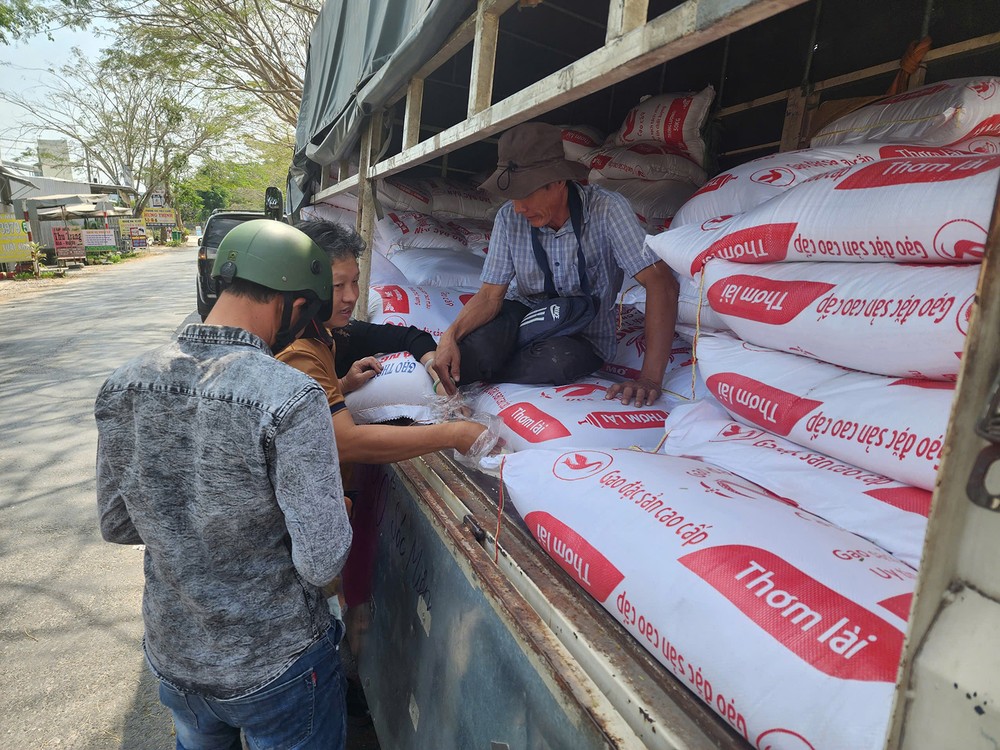
Mr. Luu Van Phi, Director of the Department of Industry and Trade of Tien Giang Province, attributed the price decline to India lifting its export restrictions, which has increased global supply and driven prices down. With ample reserves, India has been able to boost exports without straining its domestic market. Additionally, the Philippines—one of Vietnam’s largest rice importers—has temporarily halted rice imports. The cooperation among the Philippines, Pakistan, and India has intensified pressures on Vietnam’s rice exports.
Another challenge in 2025 is Indonesia’s decision to stop importing certain agricultural products, including rice. Mr. Luu Van Phi noted that shifting trade policies in key markets have caused a sharp decline in Vietnam’s rice export orders, pushing prices to their lowest levels.
To prevent oversupply and further price drops as the winter-spring harvest peaks, MARD has urged MoIT to accelerate exports during high-yield months—February, March, April, July, August, and September. Deputy Minister of MARD Tran Thanh Nam emphasized that both ministries will strengthen trade promotion and support businesses in expanding export markets. These measures aim to ensure that harvested rice is sold efficiently, maintain a balance between farmers and exporters, reduce inventory, and enhance the overall value of Vietnam’s rice supply chain.
MARD has proposed stricter oversight of rice traders to ensure a more structured and professional supply chain. Under this proposal, traders must register as businesses and sign contracts with farmers based on agreements with export companies regarding paddy variety and quality standards. If implemented, registered traders will be eligible for support policies similar to those offered to enterprises.
Mr. Tran Thanh Hai, Director of the Import-Export Department under MoIT:
Financial assistance and tax rebates for enterprises
In 2024, Vietnam’s rice exports fetched high prices. However, as India resumes exports in 2025, global supply has expanded, driving prices downward. Despite this, Vietnamese exporters have successfully positioned themselves with high-quality rice products. The current priority is strengthening branding efforts to elevate market value.
Amid market fluctuations, government support is crucial. Banks should facilitate access to capital so businesses can purchase and store rice, while tax authorities must expedite export tax rebates to ensure smooth cash flow. Additionally, MoIT will intensify trade promotion and market expansion efforts to secure new export opportunities for Vietnamese rice.
Mr. Le Thanh Tung, Vice Chairman and General Secretary of the Vietnam Rice Industry Association:
Enhancing quality and strengthening production linkages
For Vietnam’s rice exports and domestic prices to remain stable, quality consistency is crucial. The first priority is improving rice varieties. Vietnam's rice seed portfolio has become a benchmark for other rice-exporting countries looking to enhance their own production.
Another key issue is lowering production costs to ensure stable profits for farmers. However, Vietnamese farmers currently face higher production costs than those in some competing countries.
In recent years, fluctuations in the Mekong Delta have shown that while farmers sometimes suffer losses, businesses may still profit—and vice versa. This instability in the rice supply chain needs to be addressed. To that end, MARD is actively implementing the Sustainable Development Project for 1 Million Hectares of High-Quality, Low-Emission Rice Linked to Green Growth in the Mekong Delta by 2030. The initiative aims to secure sustainable profits, reduce risks, and restructure the rice industry to minimize vulnerabilities.
